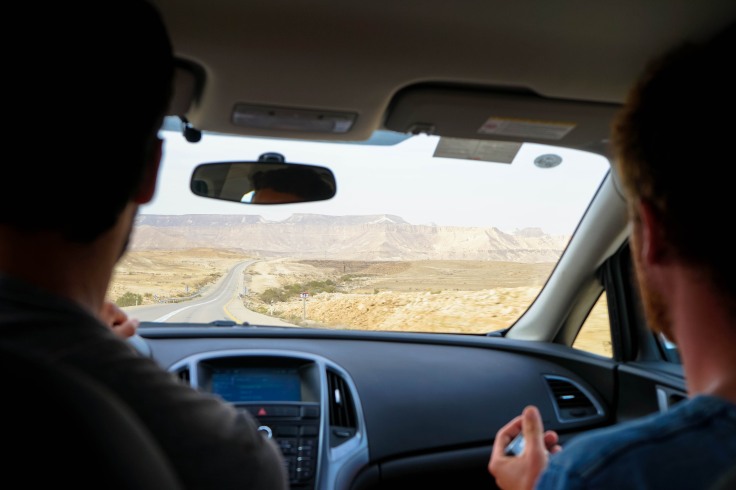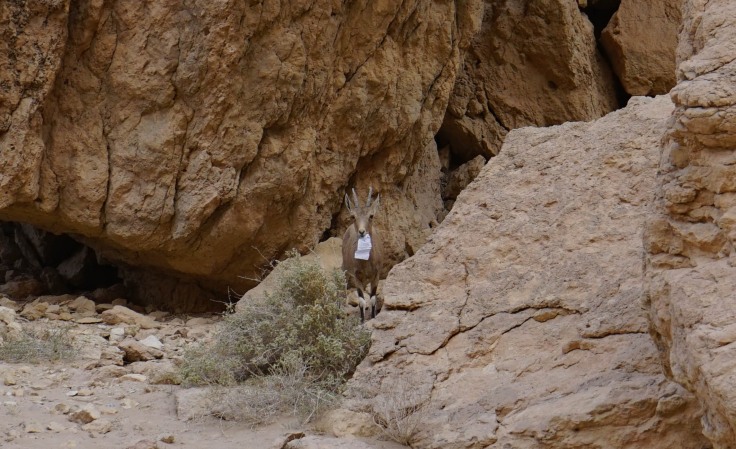My traveling nomad friends and I entered Israel in the south, crossing the land border from Aqaba in Jordan to Eilat in Israel (you can read about that here). My first impression of Israel was that is was so modern and westernised compared to where I had been traveling for the past few months. It felt really strange. I like to travel to countries that push me out of my comfort zone because they are different to where I am from. At least in Eilat, I felt like I was in any other seaside city back in Australia. I was however, still interested in seeing what Israel had to offer with its southern desert landscape and rich and confusing history.
The second thing that struck me was how crazy expensive it was in Israel! And I mean everything was expensive, supermarket food and accommodation inclusive. We arrived in Eilat in the evening and after much searching managed to find a ‘cheap-ish’ hotel room (a triple room was cheaper than individual dorm beds in a hostel). To get from Eilat in the very south by the Red Sea to Jerusalem we could either catch the bus or hire a car and stop off at a few places along the way. We decided on the second option and in the morning we hired a car, which was actually reasonably priced. When we later refuelled the car we realised why the car hire fee was so low, re-fuelling the car (one tank) cost more than hiring the car itself!
Anyway, we did a supermarket shop and set off north heading through the Negev desert. This desert is massive! It covers more than half of Israel’s land surface area stretching from Eilat in the south to Beer Sheva in its northern limit. We drove towards Makhtesh Ramon seeing warning signs for tank crossing and dust storms along the way. As you do. We also drove past a large number of palm plantations. This was where I learned that dates come from palms! Mind. Blown. I have since shared this fascinating fact with many friends, and turns out I was not the only one who didn’t know where they came from. ps. the dates in Israel are amazing, and incase you didn’t know, they come form palm trees 😉
We entered Makhtesh Ramon (The Ramon Crater) without even knowing it, thinking we were just driving down a steep descent. All of a sudden we were in the base of the crater. At 40 km long, 2–10 km wide and over 500 m deep it is the world’s largest Makhtesh. A Makhtesh is a crater not formed by the impact of a meteor or the eruption of a volcano, but from erosion. It starts off as a layer of hard rock covering soft rock. The internal softer substrate (chalk or sandstone) is eroded and washed away from under the hard rock and eventually the harder rock collapses in, leaving a large crater. These geological features are only found in Israel and in the South Sinai of Egypt.
The crater is barren, rugged, dry and beautiful with plenty of areas to hike and explore. We camped at the Beerot campground right in the middle of the Makhtesh, and the Israeli’s certainly know how to set up a good campground. Here we met some hikers walking the Israel National Trail, which sounds like an epic adventure. It has now crept onto my ever-growing list of long-distance hikes to do in life. I was coming down with the flu, but pushed through the whines of my aching body to still do some hiking around this beautiful area. When we left we exited the crater in the north, stopping off for the panoramic views at Mitzpe Ramon over the entire crater before continuing on our journey towards Masada. Stay tuned for the next post on Masada and the Dead Sea. 🙂














The nitty gritty:
- Where to stay:
- In Eilat is was very hard to find somewhere to stay for a reasonable price. We ended up getting a triple room at the Sunset Motel as this was cheaper than three dorm beds in a hostel. We did still pay 250 shekels for the room for one night.
- I know a lot of people couch surf in Israel because it is so expensive. For us it was going to be a little tricky because we were three people.
- Beerot Camping Site in the middle of the Makhtesh Ramon.
- The Israeli know how to set up a nice campsite. The facilities were really top quality and the staff were great. They had a small kiosk where you could buy snacks and cup noodles. There was free drinking water available.
- 16 shekels per person/per night for camping with your own equipment or you can hire a mattress or sleep in one of their huge multi-person tents.
- We didn’t book, but just rocked up and that was ok.
- In Eilat is was very hard to find somewhere to stay for a reasonable price. We ended up getting a triple room at the Sunset Motel as this was cheaper than three dorm beds in a hostel. We did still pay 250 shekels for the room for one night.
- Getting around:
- We hired a car from Sixt rental in Eilat. Their office is located right in the middle of town. They were the most affordable option and they even gave us a free upgrade. The roads in Israel are well signposted and easy to drive on. To get the the campground in the Makhtesh we were on gravel roads but the rest were paved.
- I couldn’t find any information on taking a bus to the crater, so driving yourself would be the better and more flexible option.
- Food:
- Stocking up at the supermarket in Eilat is a good idea (or Beer Sheva/Jerusalem if coming from the north).
- The campground had a small kiosk but nothing substantial to rely on.
- As always, make sure to carry plenty of water in the desert.
Read my other posts about Israel here:
- Crossing the Jordan-Israel border at Wadi Araba (Aqaba/Eilat), and back again
- Masada, the Dead Sea and dinner in Haifa – Israel road trip
- Jerusalem
- Visiting Hebron in the disputed territories
- Street art in Tel Aviv – Israel
- Tel Aviv – Israel


6 Pingback